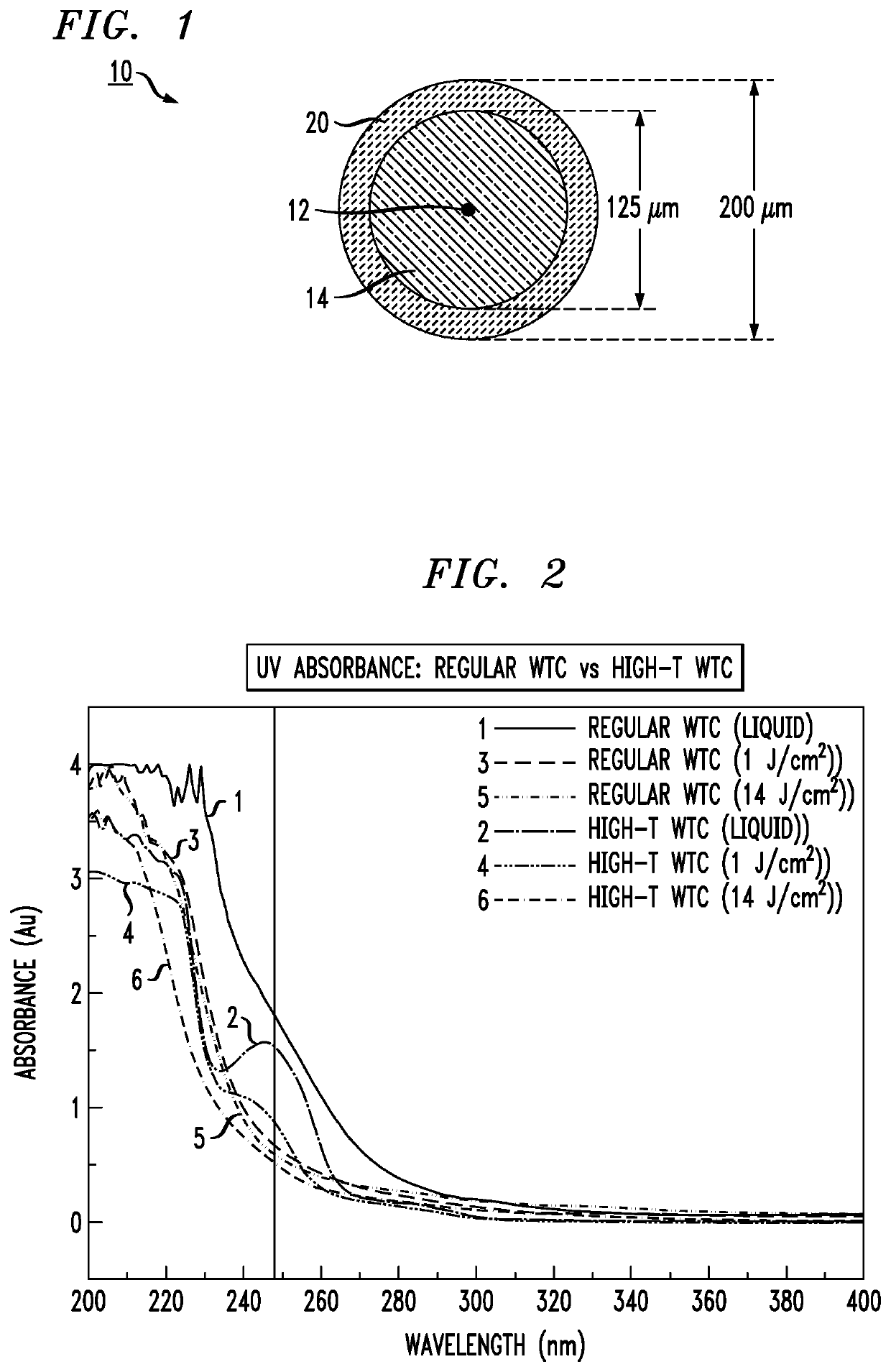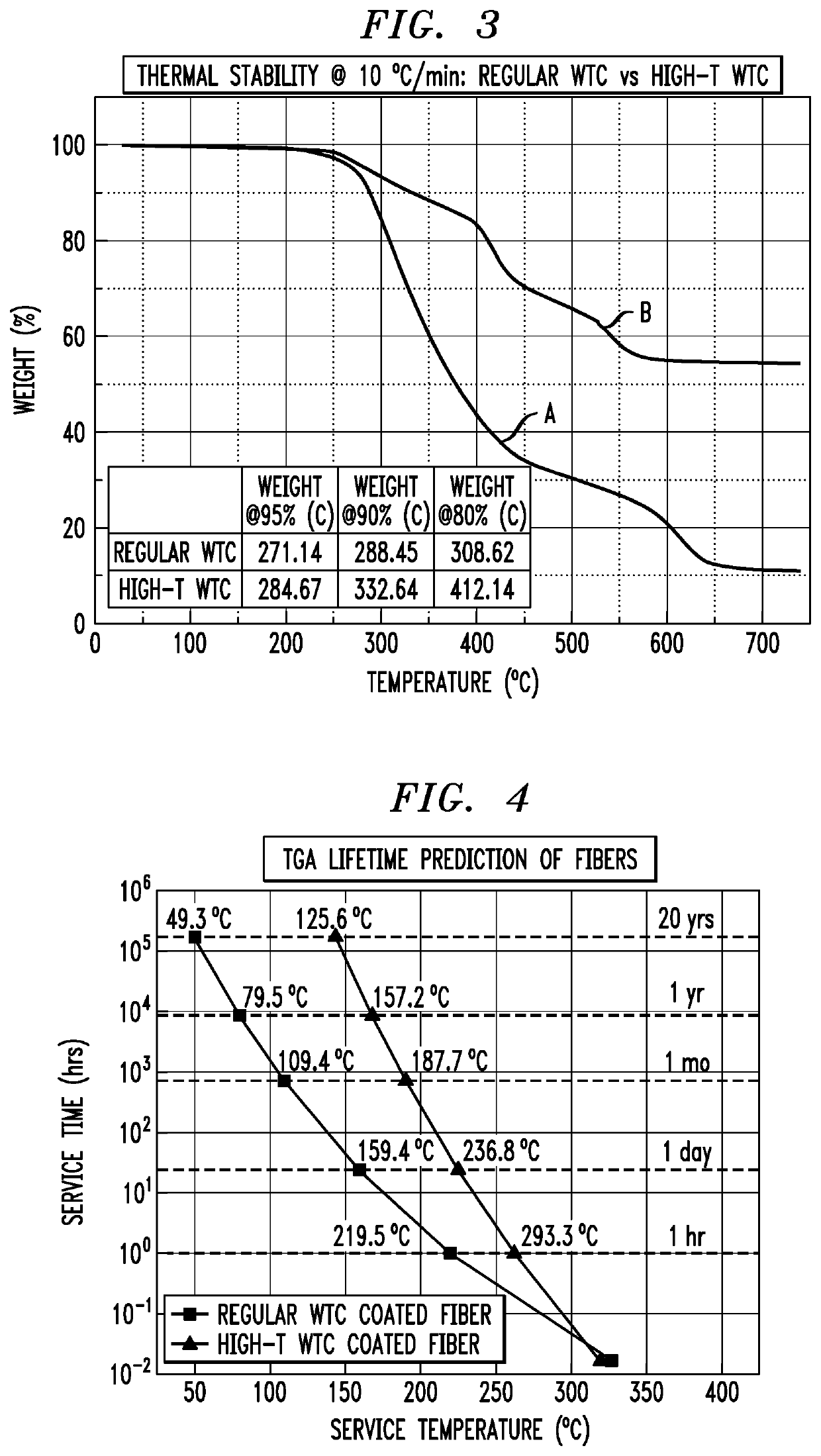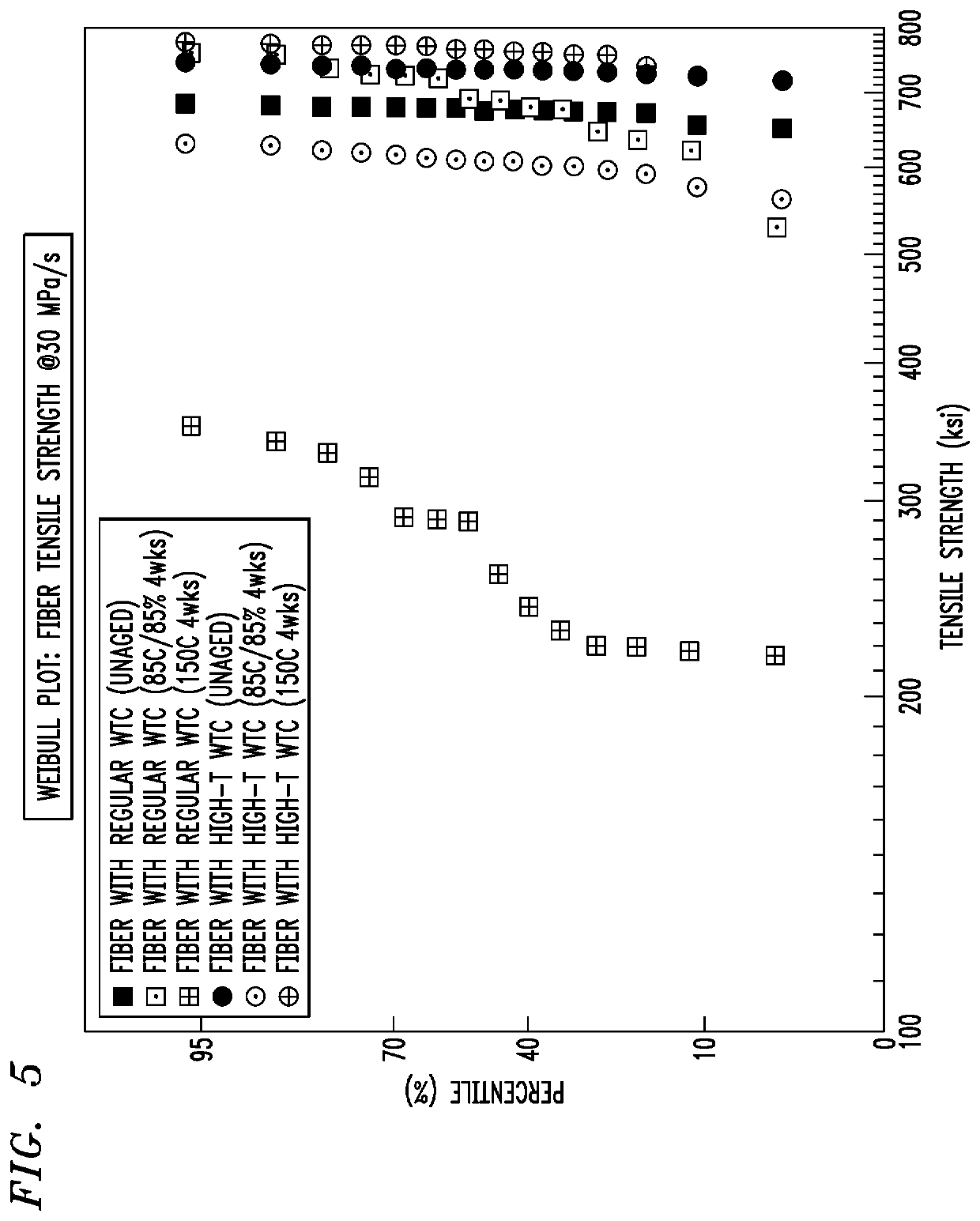Optical fibers with high-temperature write-through coatings
a write-through coating and optical fiber technology, applied in the field of optical fibers, can solve the problems of lack of thermal stability, limited efficiency of high-volume production of fbgs, and possibility of breakage (or at least weakening) of the recoated portions of fibers within which the fbgs are formed, etc., to achieve a relatively low cost, reduce the effect of microbend-induced transmission loss and convenient handling and manipulation
- Summary
- Abstract
- Description
- Claims
- Application Information
AI Technical Summary
Benefits of technology
Problems solved by technology
Method used
Image
Examples
Embodiment Construction
[0024]Disclosed herein are optical fibers having a vinyl group-containing silicone polymer (hereinafter referred to as “VG-containing silicone polymer”) coating. The VG-containing silicone polymer coating is disposed onto optical fibers, preferably glass fibers, or onto other optical substrates that can have light-induced (for example, UV-induced, or infrared-induced) optical devices written into one or more portions within the optical fiber or substrate without removing the VG-containing silicone polymer coating, thus permitting high speed manufacture of thermally and optically robust fiber gratings. The optical devices can be a grating, preferably a fiber Bragg grating. The optical fiber can comprise a glass optical core and a glass cladding, for example.
[0025]The VG-containing silicone polymer WTC of the present invention can be applied to a variety of optical fibers, including those comprising a glass optical core and a glass cladding. Suitable optical fibers can include an inne...
PUM
| Property | Measurement | Unit |
|---|---|---|
| thickness | aaaaa | aaaaa |
| wavelengths | aaaaa | aaaaa |
| wavelengths | aaaaa | aaaaa |
Abstract
Description
Claims
Application Information
 Login to View More
Login to View More - R&D
- Intellectual Property
- Life Sciences
- Materials
- Tech Scout
- Unparalleled Data Quality
- Higher Quality Content
- 60% Fewer Hallucinations
Browse by: Latest US Patents, China's latest patents, Technical Efficacy Thesaurus, Application Domain, Technology Topic, Popular Technical Reports.
© 2025 PatSnap. All rights reserved.Legal|Privacy policy|Modern Slavery Act Transparency Statement|Sitemap|About US| Contact US: help@patsnap.com



